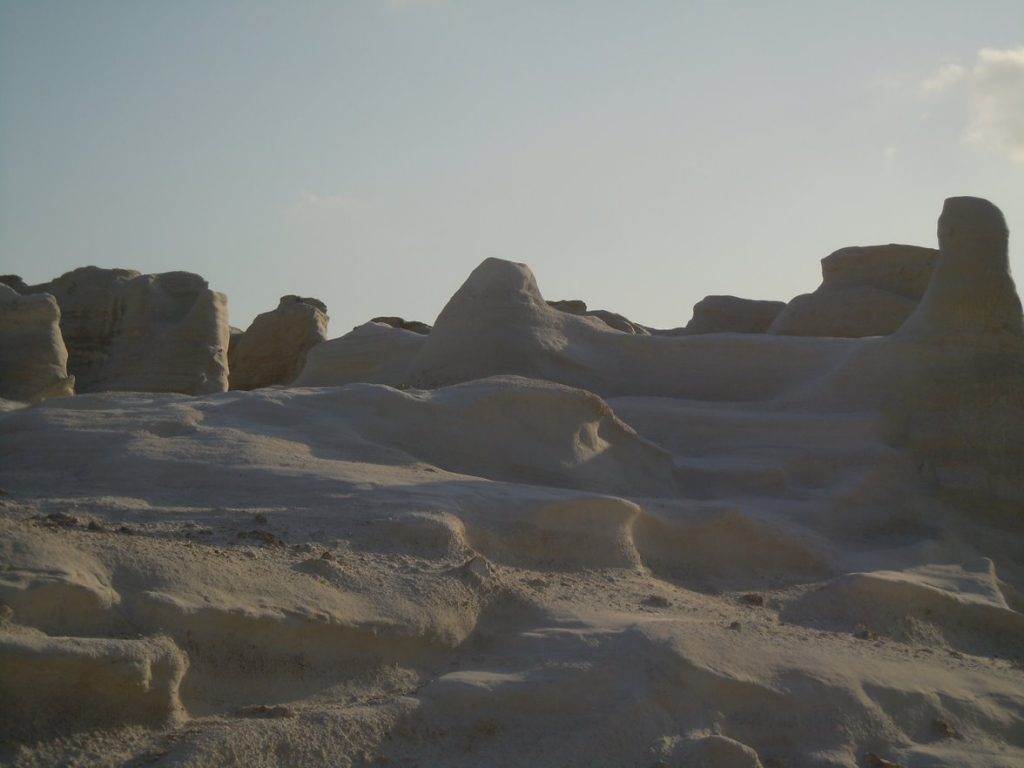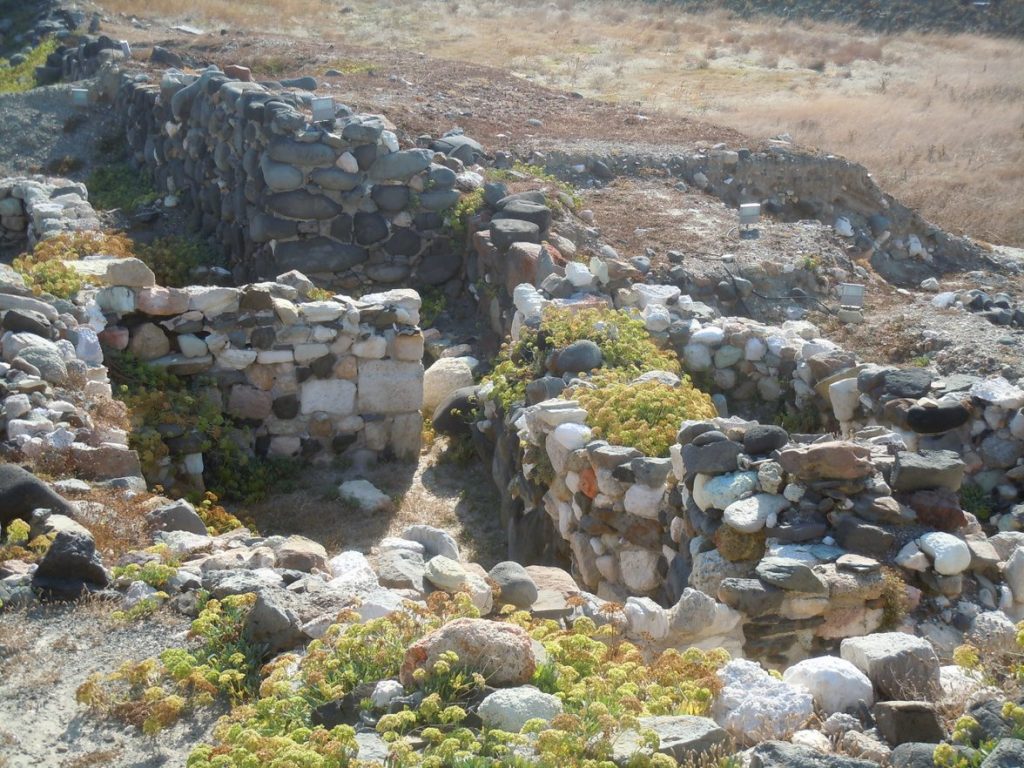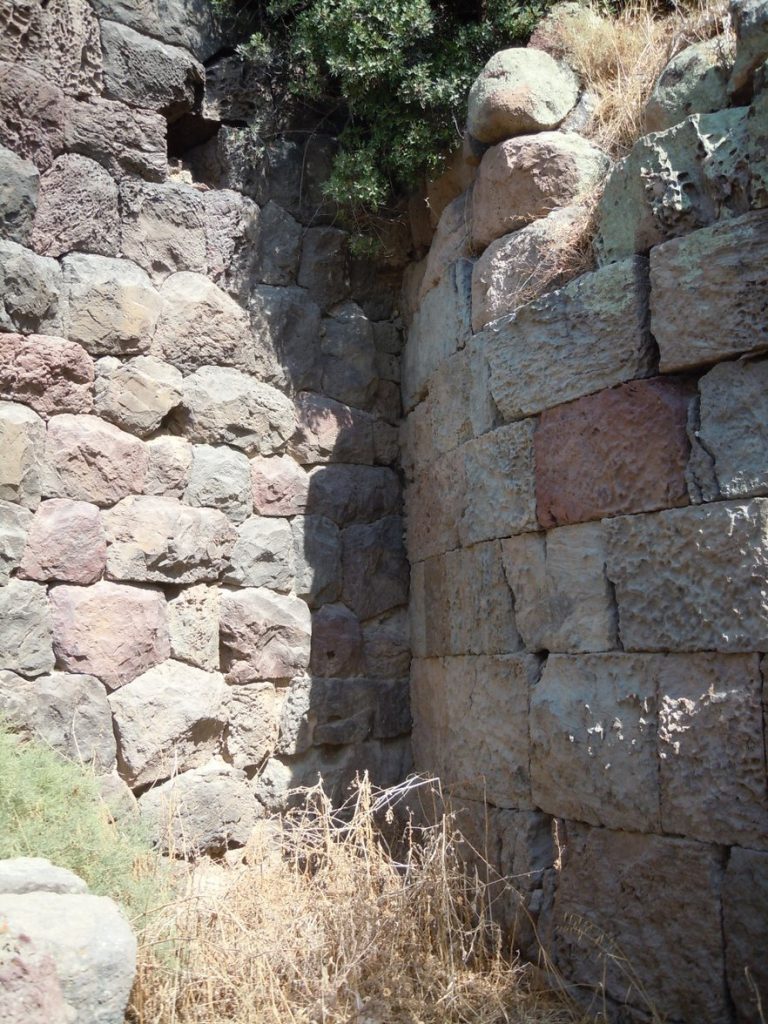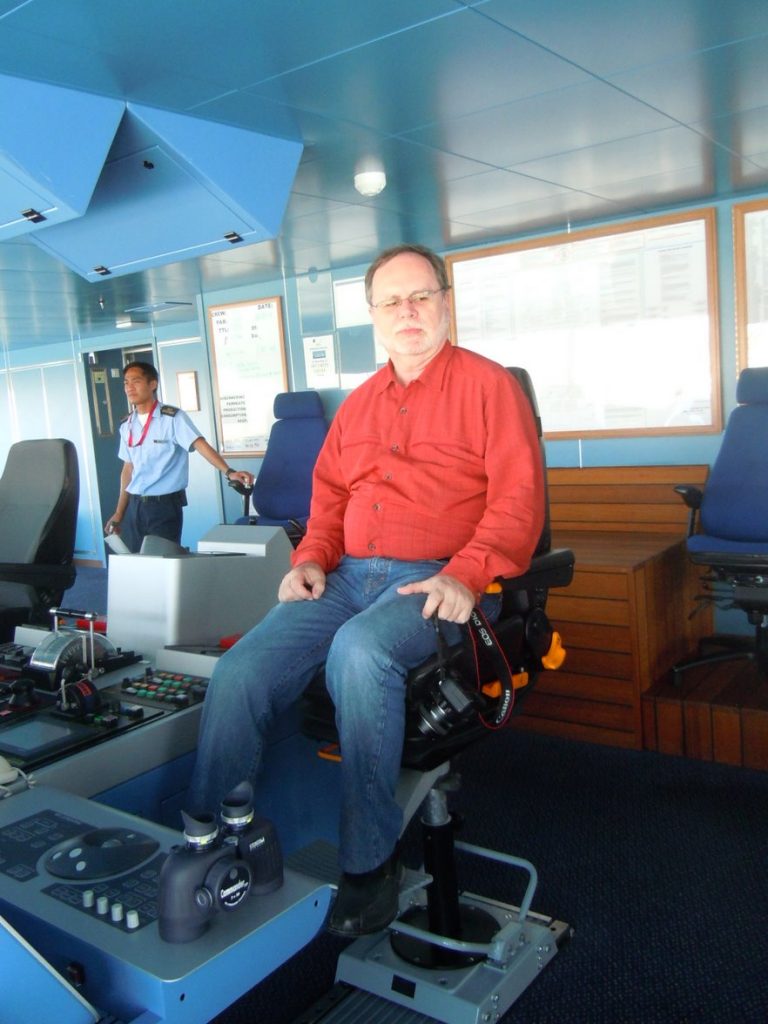This will likely be a short post. It is 10:45 pm and the ship is moving in all three axes because there is a high wind and following seas. The laptop keeps sliding on the table.
I have posted about 30 pictures from today on the pictures page. It looks like I will end up with a gallery for each day since trying to show the day in 5 or 6 pictures (my original intent) just isn’t going to work.
We anchored at about 7:00 this morning and by shortly after 8:00 we were on shore and ready for our brief exploration of Milos. The weather was clear and the temperature, at least to start, was moderate, but the wind blew hard all day. Our guide, Leonidis, was knowledgeable and did a great job of introducing us to Milos.
We started out by going to Sarakiniko which he described as a desolate beach. It wasn’t. This area of the island is made up of a combination of volcanic ash and seabottom from a series of eruptions starting about 2.5 million years ago. A lot of minerals were deposited and there has been mining here for a long time.
From there we went to Firopotamos where we got more island history and looked at some Mycenaean-era ruins.
The Mycenaeans were late comers who took over after the Creteans lost influence. Much of the trade at that time was in obsidian, which some of you know is volcanic glass that can be used to make really sharp tools. Before there was any metal technology (like copper and brass) in the area, obsidian made the island rich. The ruins we saw lay hidden for almost 2,000 years before being discovered and excavated (poorly) by the French at the end of the 19th century.
We then drove through some small villages and over narrow roads to arrive at Plaka. Plaka was built by the rich pilots who for many years were the guides to ships in the area. With the development of good charts, the pilots largely went out of business, but they did leave us Plaka. This little town had very narrow streets. It is at the top of a hill and commands a good view of this part of the island. This was a rest stop so we got to wander around on our own and we had coffee and good spice cake at a “taberna”.
Down more narrow roads and past small villages we came to Plathiena where we saw another polygonal wall and a wall from Alexander the Great’s time that were part of the defense system for the main port at that time. As strong as the walls look, they could not have been completely effective since the Romans captured part of the island. The Romans made changes to the local amphitheater, which had been built by the Greeks. We saw some ruins of the amphitheater which is undergoing some reconstruction. [A common theme of our guide was how much impact the financial problems of Greece had had on local archeological projects.] This is also the place where the French bought the Venus de Milo (really Aphrodite) from a local farmer and spirited it off to the Louvre. Leonidis was not happy about this even though it happened 200 years ago.
Back on the ship, we took a tour of the bridge. The huge space is usually only occupied by 2 or 4 people. The ship management systems seemed really sophisticated—even if they were running on Windows XP. Pamela, the Odyssey’s navigator, gave us a really good overview of what each of the ship’s officers and how everything is organized.
There are lots of food choices on board and it is a temptation to eat too much. Our resistance slipped a little today.



